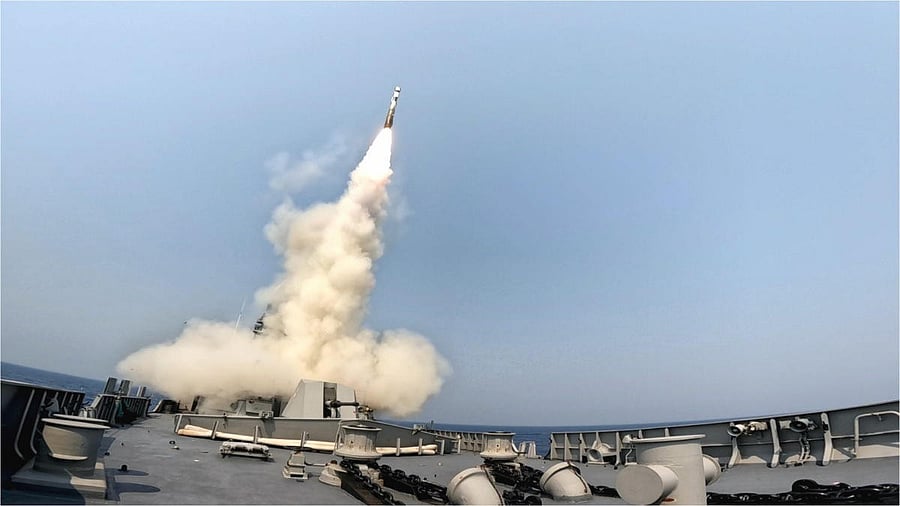
BrahMos missile being launched launched. (Image for representational purpose)
Credit: PTI File Photo
After 12 years of a ‘Make in India’ focus, India’s arms exports are showing signs of life. In some sectors defence exports are now part of a well-oiled supply chain feeding both international ambition and national security.
Like a seasoned forger, supplying the finest steel for its nation’s armaments, India is onboarding an arsenal that now extends beyond its borders.
India’s defence exports have reached a record ₹23,622 crore ($2.7 billion) in FY2024, marking a 32.5 per cent increase over the previous year.
Behind this impressive tally lies a strategic recalibration: from tapping into burgeoning demand for Indian-manufactured explosives, such as TNT, RDX, and HMX, to landing orders from buyers across conflict zones.
Notably, India reportedly has ammunition export orders booked in for three years’ manufacturing capacity. This even as five additional private-sector plants are imminent.
There is, however, a broader reform agenda required to harness this momentum fully. To cement its position as a global defence supplier, India must prioritise streamlining procurement processes, facilitating debt, and bolster infrastructure through public–private partnerships. The need of the hour is a performance-linked incentive (PLI) programme for defence production.
The evolving geopolitical landscape adds further impetus. India’s recent foray into war zones is exemplified by its significantly increased arms exports to Armenia, with the Akash air defence missile systems now playing a role in the battleground. The performance of these indigenous weapons in live combat conditions will serve as a litmus test for future export potential.
For the Indian armed forces to have greater confidence in the domestic industry, a more robust commitment from the defence ministry for placing larger domestic orders is indispensable — for providing critical a mass bigger domestic market gives production incentive for exports as an add on.
Meanwhile, strategic collaborations are on the horizon. Poland, a traditionally robust defence spender, is now scouting for an Indian partner for a joint venture between its WB group and an Indian firm for ammunition production. Such partnerships could offer mutual benefits — a blend of advanced technology and cost-effective manufacturing.
India would do well to have a short checklist that would enable it to focus on high-value items like defence electronics, BRAHMOS missiles, and even a bold venture into naval shipbuilding.
The path forward is clear: rather than attempting to cater to an overly broad spectrum of defence needs, India must concentrate on select, high value items where it holds a competitive advantage, like Brahmos missiles, RDX explosives, and surface-to-air missiles. By honing in on these niche capabilities and reinforcing its domestic production through comprehensive reforms and incentivisation, India can ensure its ascent as a reliable and innovative global arms supplier.
In this era of shifting alliances and emerging threats, the imperatives are as much about quality and strategic focus as they are about volume. The record exports of FY2024 are a promising prelude, but sustained success will depend on India’s ability to innovate and deliver consistently. The time for financial incentive for this sector is now.
(Ninad D Sheth is a senior journalist. X: @ninadsheth.)
Disclaimer: The views expressed above are the author's own. They do not necessarily reflect the views of DH.